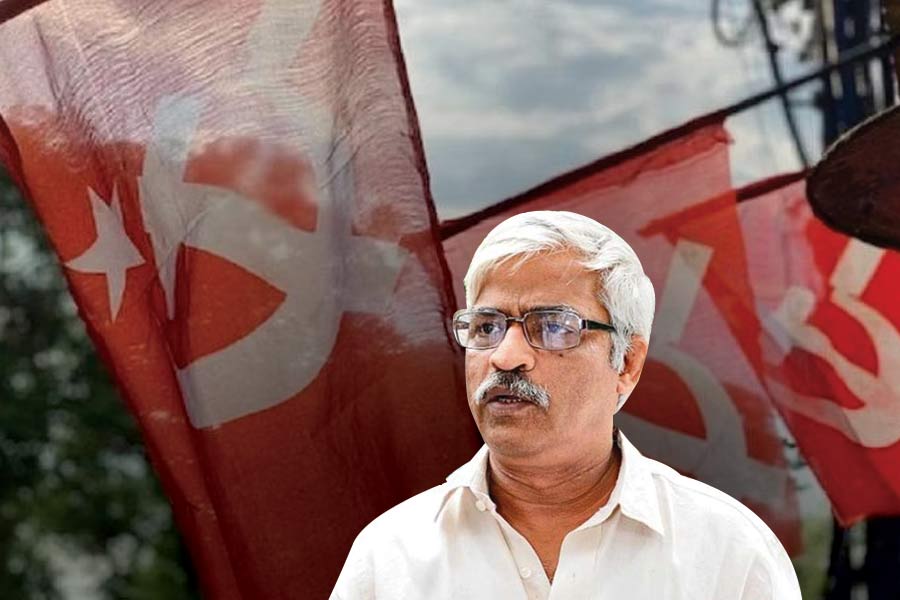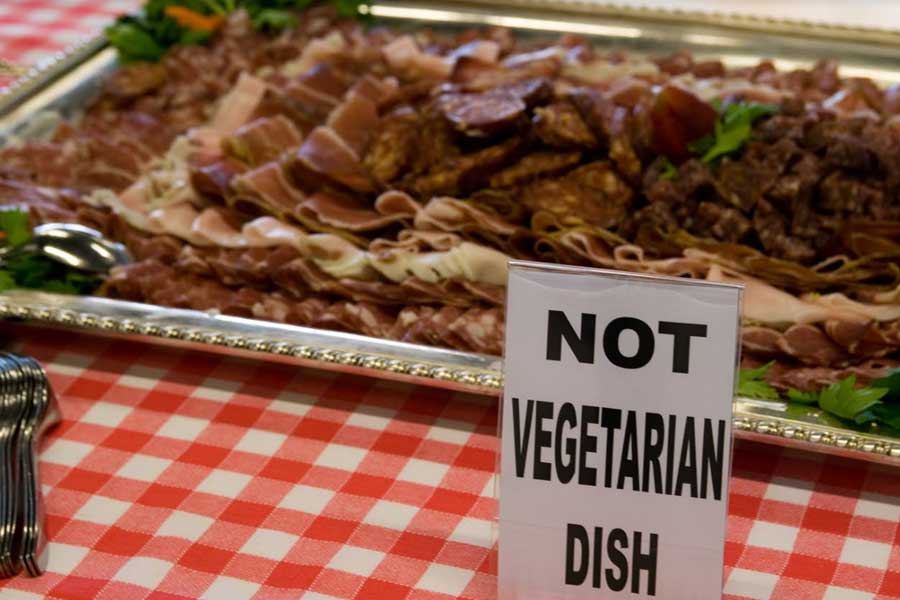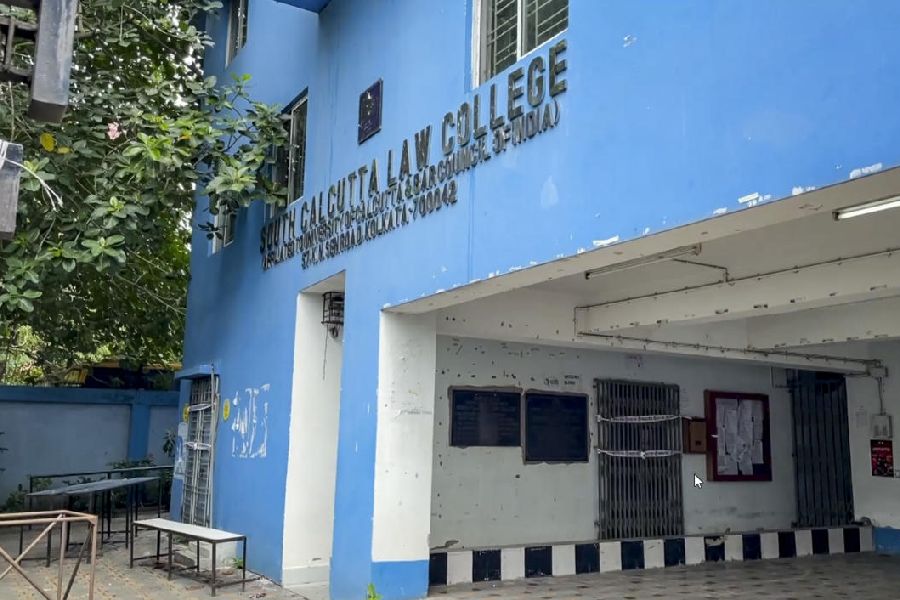 |
| The military secretariat at 6 Esplanade East |
The british tried to keep the bedlam of the “black” town in abeyance by creating an illusion of orderliness in central Calcutta. However, as was often the case, the hordes would surge past the barriers as they marched from Wellington Square threatening to overrun Government House itself. Dalhousie Square had been witness to the swadeshi movement in its most violent manifestation, and also trade union movements like the tram workers’ strike in the late Forties and the bank strike called thereafter.
The ugly face of unionism was revealed in those early post-Independence years. Smriti Mitra was witness to it. Mitra is one of the first Bengali women to break into what was essentially an Anglo-Indian bastion. She was a telephone operator who had worked at 8 Hare Street (Telephone House) at the beginning of her career and had seen Telephone Bhavan come up.
Widowed and 73 now, I met Mitra in her small house in Park Circus that she shares with her family. Born across the border, she was one of nine sisters and came to Calcutta in 1938. In 1949, when she joined Calcutta Telephones, she used to live with her sister's family, her sister and brother-in-law being the legendary Tripti and Sambhu Mitra, respectively.
She remembers how she never lost her nerve at the interview though she could barely speak English and did not have her 'refugee card' either to prove that she was dispossessed. She remembers taking the tram, night shifts and the ghostly gaslights of Dalhousie. “We had to wear our hair in a bun because of the headsets. The Park telephone exchange had sofas and some Anglo Indian girls would scream at us: ‘Get up miss.’ But I would shout back: ‘If you can sit I can also sit.’ Fortunately, our superintendent Miss Macdonald appreciated efficiency,” says Mitra breaking into giggles.
She also remembers with anger how during the strike in the Sixties, unionists heckled the harmless Anglo-Indian girls and had actually urinated on a man on the verge of retirement whose only crime was that he refused to join the strike.
Calcutta’s “black” and “white” divide during colonial rule becomes clear as a picture from the balcony of Arun Lall’s flat on the top floor of Esplanade Mansion, known as Ezra Mansion after the Jewish family that owned it till the LIC took over. The overlooking Maidan resembles thickly wooded rolling parkland, a luxury north Calcutta never enjoyed. With its panoply of balconies, the mansion has the air of a great prima donna, though, of late, the blooming pink paint gives it the look of a giant wedding cake.
The military secretariat at 6, Esplanade East just a block away, looks dour and stony-faced in comparison in spite of the swags and rows of female heads. Constructed in 1904, it houses several government offices and is also the newspapers reading room of the National Library.
Lall, whose father was head honcho of three big companies in Dalhousie and has lived in that flat since birth for 50 years, says he was “struck by the tremendous amount of marble, gilded mirrors, walnut wood panelling in lifts and the Burma teak wainscoting” in three successive offices of his father.
It was his first exposure to “sophisticated” office equipment like the teleprinter on which “written messages would come from another end of the world, time zones notwithstanding.” Lall was also taken in by the “opulent attires” of the staff and the masses of American cars. That was up to his teens when Indira Gandhi put a stop to a stylish lifestyle.
Gas lamps used to light the roads till the Sixties when Queen Elizabeth dropped by and “ugly angular” tube lights were installed. Now the yellow lights are back with halogen lamps.
Another vivid memory is that of protest marches up to the east-facing gate of Raj Bhavan. “Very often the police were outnumbered and they used to resort to teargas. We retreated the moment we heard gunfire. Our eyes used to smart. Police used to hammer the demonstrators. Today it is relatively quiet.” Lall, himself a tea man, speaks with relish about the street food of Dalhousie, but despairingly about the “nightmare of vehicular and human traffic”. What Lall never mentioned is that it is a nightmare for pedestrians with the unstoppable rush of buses, cars and other lumbering vehicles for which road laws do not exist.
So, where is the “real” Dalhousie Square of today — in the boardrooms of mercantile houses, in the corporate-look banks, in the sprawling weed-infested grounds of St John’s Church, or among the lawyers in rusty black at Bankshal court, whom artist Ranen Ayan Datta had sketched for his famous ad campaign, the streetfood-sellers who commute from the districts, or among the cogs in the wheel, the formidable workforce of “officepara”, as this heritage zone is called?
My quest for Dalhousie Square took me, among other settings, to the waiting room of a fashionable orthodontist in Waterloo Street, the posh apartment in Queens Park of an ex-chief of the CESC and Andrew Yule, the stuffy drawing room of an ex-secretary in Beniapukur, and the spartan living quarters in Kansaripara of Parameswaran Thankappan Nair, better known as an walking encyclopaedia on anything Calcuttan, whom I woke up long after he had retired.
As in the rest of Calcutta, high and low life coexist in Dalhousie Square today, rarely treading on each other's corns. For neglect has taken down the nose-in-the-air types a peg or two. At Maxim’s in the semi-deserted Great Eastern Hotel, that used to be a hot nightspot, the gigantic mirrors reflect the dark walls. A notice hanging outside the hotel entrance reads: “Everything here is normal as was on 19 Nov 1840. We survive to serve you”.
Newman's is meant for cut-price sari and garment sales. Books, with which it was once synonymous, have taken a back seat quite literally. The building housing the showroom of Cuthbertson & Harper, saddlers since 1837, seems afflicted by a virulent form of dermatitis.
A little further down I came upon a marble plaque: “Federico Peliti — importer of English, French and Italian provisions. Fancy presents and wine merchants.” I knew that this fancy restaurant, where the office crowd used to lunch, was opposite the Raj Bhavan but had no idea that it looked so shabby now. The woodwork of the verandah is falling to pieces. Even Hamilton’s, jeweller of royalty, has turned into a grubby bank, its walls announcing the availability of holiday homes.
In the evening, Old Court House Street is even more forlorn in spite of the clogged roads and pavements choked with thousands of people waiting for buses that never seem to come to take them back home. The darkness hides their desperation. Is that how the empire has struck back?










